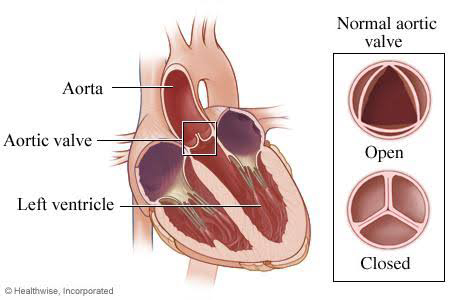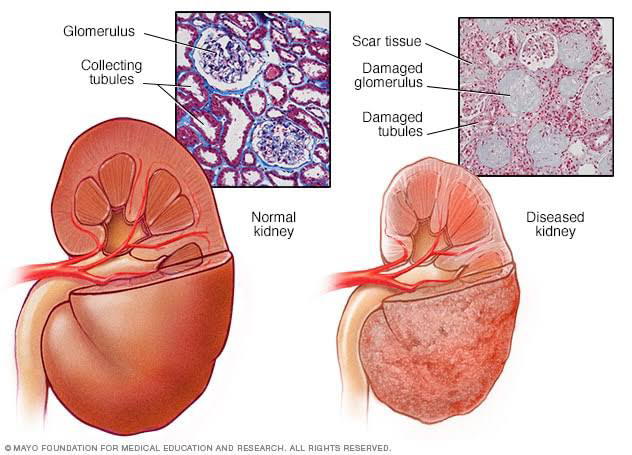⭐⭐⭐ FUNCTIONING OF NERVOUS SYSTEM ⭐⭐⭐
⭐⭐⭐ FUNCTIONING OF NERVOUS SYSTEM ⭐⭐⭐
1) Brain is a very important organ which controls our whole body.
How does it perform such diverse functions?
2) The answer is 'NEURONS' .
(A) Neurons send and receive signals from the brain. They transmit electrical and chemical signals to other cells.
(B) Electrical impulse is known as action potential. The basis of this impulse production and transmission is the passage of different ions across the neuronal membrane.
Charged particles i.e ions, build up a charge across the cell membrane due to concentration gradient.
For eg :- there are more sodium ions on the outside, and the inside of the neuron is negative relative to the outside
This leads to generation of a transmembrane potential which helps to generate an action potential.
(C) Threshold potential is the critical level to which a membrane potential must be depolarized to initiate an action potential.
- Influx of sodium into the cell depolarizes the membrane.
- Any further depolarization than threshold level activates even more voltage-gated sodium channels and hence action potential is created.
- The threshold value decides whether the incoming stimuli are sufficient to produce an action potential or not. Weaker stimuli don't reach upto threshold level.
The larger the stimulus, the greater is the depolarization.
(D) There is Transduction of different stimuli into electric impulses.
Stimulus causes sodium channels to open. Sodium ions enter the cell (because there are more sodium ions on the outside, and the inside of the neuron is negative relative to the outside),
and potassium ions leave, restoring equilibrium.
The task of transduction of physical and chemical stimuli into depolarization and action potential depends on various anatomical factors of the cell.
FOR EXAMPLE :-
- Sound wave exciting neurons in the inner ear.
Sound Waves enter the ear canal and cause the eardrum to vibrate. Vibrations pass through 3 connected bones in the middle ear.
This motion sets fluid moving in the inner ear. Moving fluid bends delicate hair-like cells. The bending of the cilia opens pores at their tips which allows ions to enter and depolarize the cell.
- Heat excites neurons in the skin and this helps us to feel hot or cold.
Thermoreceptors in skin nerve endings are the sensors that transform temperature into opening of ion channels and firing of impulses which are further sent to the brain.
When skin temperature falls below a set-point, these molecules induce impulses.
- Light excites neurons in the eye.
When light hits the retina, special cells called photoreceptors turn the light into electrical signals.
When the retinal in the rhodopsin absorbs a photon, it changes from the 11-cis isomer to all-trans retinal.
This change triggers a series of biochemical alterations in the molecule and activation of phosphodiesterase that hydrolyzes cGMP. The hydrolysis by phosphodiesterase lowers the concentration of cGMP.
Opening and closing of Ion channels depends on the levels of cGMP.
In this way, decrease or increase in cGMP regulates the opening and closing of Ion channels and impulse production.
(D) Thus, these neurons encode the information received from internal and external environment in terms of electric impulses by various biochemical mechanisms.
Greater the strength of stimulus, greater is the frequency of action potentials produced.
For eg :- External environment
A bigger stone when hit to us produces more pain than smaller stone as more pain impulses are produced.
Internal environment
High blood sugar causes more production of insulin from pancreas than that associated with normal blood sugar.
(E) We know that homeostasis is maintained in our body.
Homeostasis means capacity of the body to maintain the stability of variables like temperature, acidity, and water level, etc.
The homeostatic control is essential for survival .
Our brain works it's best to maintain homeostasis.
The neuronal circuits between the brain and different organs are designed in such a way so as to maintain homeostasis.
For eg :-
The sensation of hot vessel when touched travels through sensory neurons to the sensory areas in brain from where the information is passed on to the motor areas through neurons and then through the motor nerves to the muscles of hand. That's why we withdraw our hand on touching hot vessel.
(F) How stable and specific neuronal circuits and connections are formed ?
- Circuit gets strengthened if the pre- and postsynaptic neurons fire in synchrony ( simultaneous action) , whereas those who fire asynchronously are eliminated.
- Besides, there are synaptogenic and anti-synaptogenic factors, which control the specificity of synaptogenesis.
- Synaptogenic growth factors are the chemicals secreted from the postsynaptic neuron to induce appropriate differentiation of the presynaptic terminal.
- Anti-synaptogenic factors are the chemicals which leave the neuron refractory for synaptogenesis.
- Other important factor in specificity of circuits is activity regulated genes in the neuron.
- Each cell type in the brain possesses a distinct set of activity-regulated genes that allow each cell type to interact with and modify specific synaptic inputs within their neural circuit.
- Gene regulation is the process of turning genes on and off. During early development, cells begin to take on specific functions. Gene regulation ensures that the appropriate genes are expressed at the proper times.
- Gene regulation is attained by mechanisms like chemically modifying genes and using regulatory proteins to turn genes on or off based on the function of the particular cell.
NOW, WE CAME TO KNOW THAT CONNECTION OF BRAIN WITH INTERNAL AND EXTERNAL ENVIRONMENT IS BECAUSE OF NEURONS.
3) DIFFERENT AREAS IN BRAIN HAVE BEEN SEEN TO PERFORM DIFFERENT FUNCTIONS.
Brodmann areas helps to understand these functions.
- Execution of a particular function by brain depends on the neuronal network and circuit involved to carry out that function.
Neural network depends on how the neurons are connected to each other and other structures in body.
For eg :-
Function of vision involves neurons projecting from eye upto the area related to vision in the occipital lobe.
- Specialization of functions also depends on cell types, synapses, different neurotransmitters like serotonin, dopamine , etc , receptors, myelination levels, etc.
- But functional role of a given brain area is not said to be fixed or the same for whole life. In certain circumstances, a brain area devoted to one function can perform other function due to the property of plasticity of the brain.
For eg :- In blind people visual areas sometimes become auditory areas.
This means that the neuronal circuits formed are not permanent. New neuronal circuits can also be formed by the same neurons under certain circumstances.
4) HOW MEMORY IS FORMED ?
(A) When we see, hear, smell or perceive something, neuronal circuits are formed from the sense organs upto the brain areas.
For eg :- When we see teacher writing on blackboard, the visual stimuli enter the eye and are converted into electric impulses which are carried to the brain through neuronal circuit formed.
(B) Recalling the memory again and again makes the neuronal circuit more strong.
For eg :- When we try recall and remember the things written on blackboard again and again, the things get fit inside our mind for a long time.
(C) HOW DOES THIS HAPPEN ?
- SYNAPTIC PLASTICITY is an important aspect to understand the topic of memory.
It is the ability of synapses to strengthen or weaken over time, in response to increases or decreases in their activity.
Very active synapses (those used very frequently ) are likely to become stronger , and those that are less active, or less effective at causing an action potential, tend to become weaker. Active synapses help to form memory.
- Presynaptic neurons release neurotransmitters during action potential which bind post synaptic neuron.
The presynaptic terminal also releases neurotransmitter in absence of significant action potentials - "minis" (noise in the brain).
When strong and repetitive action potentials occur, these minis stay elevated for several minutes.
( i.e the release of neurotransmitters is increased and prolonged )
When minis stay elevated, they help growth of new connections between presynaptic & postsynaptic neurons.
- This leads to formation of long term neuronal circuits and retention of memory.
⭐⭐⭐⭐⭐⭐⭐⭐⭐⭐⭐⭐⭐⭐⭐





Neuro topics are very interesting. Keep it up👌👌
ReplyDeleteThank you so much 😊😊
DeleteVery interesting topic didi. I loved it so much👌 I want to become dr like you😊
ReplyDeleteThank you so much dear and all the best 😊😊🙏
DeleteBeta mazya naatine tuza blog shodhun kadla. Mi wachun comment karte👌
ReplyDeleteThank you so much madam😊😊🙏
DeleteNice writing nikita
ReplyDeleteThank you so much 😊😊
DeleteImpressive writing on very important topic. Well done Nikita. Keep it up 👍👍
ReplyDeleteतू बेटा फार छान लिखाण करतेस. तुझी लिखाणाची कला अतिशय सोपी व सुंदर आहे. तू अशीच लिहीत राहा जेणे करून सगळ्यांना याचा फायदा होईल.
ReplyDeleteमला वाटत की तुझी स्वतःची एक website तयार करावी जेणे करून ब्लॉग व्यतिरिक्त इतर सर्वाना तुझी आर्टिकल्स वाचता येतील.
God bless you
Thank you so much 😊😊
DeleteNice
ReplyDeleteThank you so much 😊😊
DeleteThank you so much 😊😊
ReplyDeleteGreat choice of articles
ReplyDeleteDidi
ReplyDeleteMy friend jigisha satpute suggested me your articles didi 👌👌👌
ReplyDeleteThank you so much for reading and appreciation 😊😊
DeleteYour work is lit👌👌👌
ReplyDeleteThank you so much 😊😊
DeleteOur entire friend circle liked it👌👌
ReplyDeleteThank you so much 😊😊
DeleteWe all commented😊
ReplyDeleteThank you so much 😊😊
DeleteLove u niki didi
ReplyDeleteThank you so much 🙏🙏☺️☺️
DeleteKeep writing.
ReplyDeleteThanks didu.
From
Pratiksha, suhas, hruja, asma, samir, mehwish😊
Thank you so much 😊😊🙏
DeleteNice didi👌👌
ReplyDeleteThank you so much 😊😊
DeleteDidi writes the best👌👌👌👌👌👌👌👌😊😊
ReplyDeleteThank you so much 😊😊🙏
DeleteThanks di. So useful for our physio study👌☺️
ReplyDeleteThank you so much for reading ☺️🙏🙏
DeleteThank you so much 😊😊
ReplyDeleteThank you so much 😊😊
ReplyDelete👌👌
ReplyDeleteThank you so much 😊😊
DeleteThanks
ReplyDeleteThank u for reading
Delete